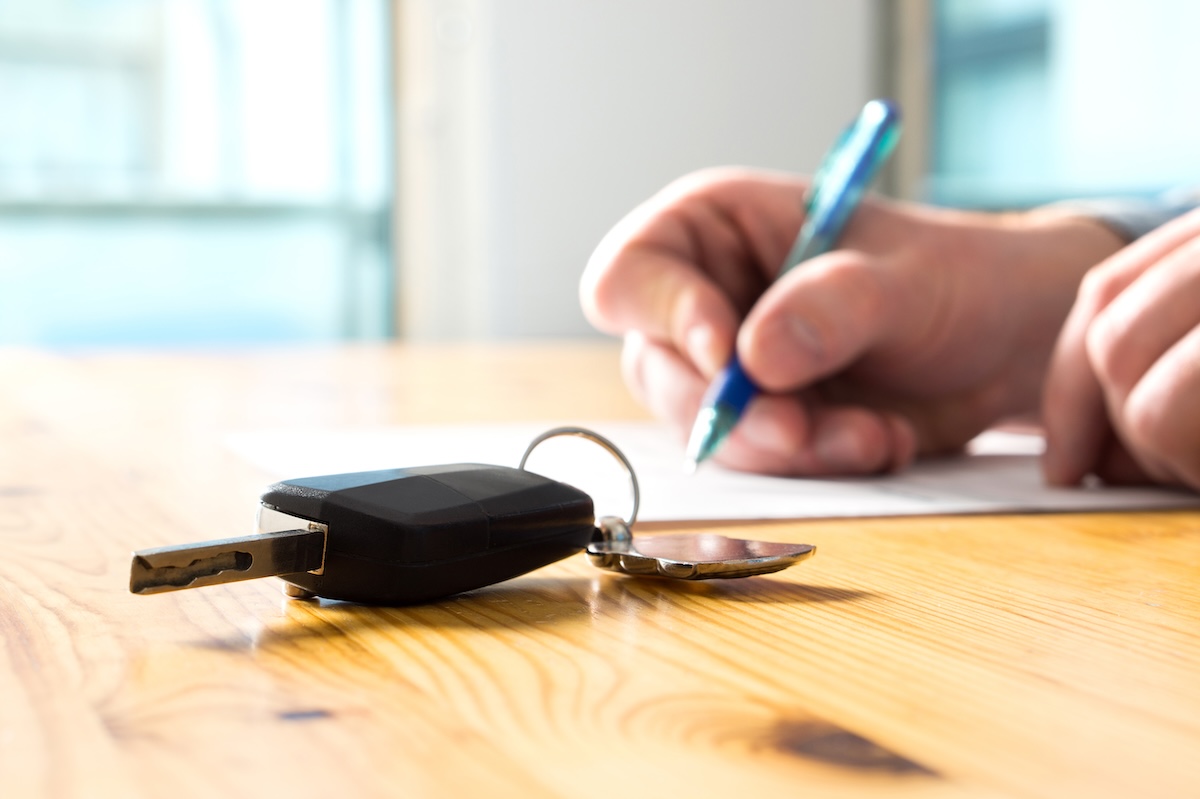There are all sorts of reasons you might want to sell your current car. You might have new needs that require a different type of vehicle, or you might just have one more car sitting in your driveway than is necessary. Whatever the reason, you’re selling it and you want top dollar for it, or as close to that as possible. Fortunately, that’s an attainable goal if you follow some basic steps.
Step 1: Assess Your Car’s Value

With rare exceptions, a new car’s value is typically at its peak just before the first owner purchases it. It loses a chunk of value as soon as it leaves the car dealership for the first time, usually somewhere around 10%. Over the next several years, it continues to lose value as it accumulates miles, wear, and (potentially) damage. At some point, the curve bottoms out and the car loses a negligible—if any—amount of value from that point on, but that typically doesn’t happen until it is well over ten years old. This is called depreciation, and it’s an important factor to keep in mind when you sell a car.
But where does that leave you, the seller? You want to know the value of your car, so you can set the sale price fairly. There are plenty of tools out there that will give you a pretty accurate number, such as CarGurus’ Instant Market Value (IMV) tool. The IMV tool asks you to either supply the Vehicle Identification Number (VIN) or the year, make, model, and trim of your car, along with important details about it. Whether you use the CarGurus IMV tool or a different one, be sure to be as accurate as possible if you’re asked questions about mileage, features, and location. All of that information will factor into your vehicle's market value.
Once you’re finished providing all of the information, the IMV tool gives you three values. The Instant Market Value at the top is what someone should expect to pay for the car at retail, meaning at a dealership. (Side note: in addition to car selling, you can also use this tool as a buyer to figure out a fair price to pay for a car). The Private Sale Estimate is what someone should expect to pay when buying your car from a private party (in this situation, from you). Lastly, the Trade-in Value is CarGurus' estimate of how much a dealership would you if you traded your car in as part of a different vehicle purchase. Take note of these factors, because they’ll inform your decision on where to sell your car, which is the next step.
Should you decide to take a more hands-on approach, you can scour online listings for cars similar to yours and come up with a valuation that’s in line with those, making sure to take into account the mileage, condition, trim, and specifications for your car. Even between trims, some models have options, colors, or engines that are more desirable than others, so keep those things in mind.
Step 2: Optimize Your Car

Before you start entertaining offers for your car, you should put your best foot forward if you want the best price. That starts with thoroughly washing the exterior and interior, and removing all personal effects (stickers, belongings, decorations). If it’s particularly dirty inside, a good interior detail might even be a worthwhile investment. You want the car to present well. You don’t want prospective buyers to go on a test drive and then offer you a lower price for the car just because it’s dirty, especially as that’s an easy critique to remedy.
Likewise, it’s a good idea to fix any damage that’s easily and quickly remedied. If your windshield is cracked, you might be able to have it repaired rather than replaced, and some insurance carriers even provide this service for free. If you have small dents and dings, a paintless dent repair (PDR) service may be able to remove them inexpensively. Curbed or scratched wheels can also sometimes be cheap to repair, and well worth it.
If your car has been modified, consider each modification and whether or not it adds to the value of the car. Some upgrades, like high-dollar wheels, brush guards, or beefed-up suspension parts are desirable and sought after for particular vehicles. Typically, you’ll know if that’s the case. If it isn’t and it can be easily and affordably removed from the car, you should do so. As a general rule, cars transact for more money the closer they are to factory condition, equipment-wise.
Do any cheap maintenance you can. If an oil change for your car costs $40 and the oil wasn’t already recently changed, it’s worth getting it done at that point just to be able to say to the potential buyer that it’s up to date on some or all of the maintenance.
Finally, get a current vehicle history report, from a vendor like Carfax or Autocheck. For one thing, you want to know what information is publicly available on the car. It would be a shame if you priced it like a clean, undamaged example and then found out that an accident you didn't know about was on the history report when a buyer pointed it out to you. Second, if a buyer doesn't run a history report on their own—although they should—you can provide one for them.
Step 3: Trade-In or Private Party?

By now, you should have some idea of what your car is worth. Typically, you’ll get the least amount of money trading it in at a dealership because dealerships often have to account for reconditioning, advertising costs, and their business overhead costs. However, trade-ins have a few advantages: in many states, you can subtract the trade-in value from the purchase price of your new-vehicle purchase (assuming they're part of the same transaction), which can save you hundreds (if not thousands) of dollars in sales tax. The other advantage is that it’s usually the least amount of hassle, and the dealerships manage car sales and car purchases all day.
There's also a new twist on this process, coming in the form of instant online offers. Lots of dealerships will gladly buy your car from you without you buying anything from them in turn. To that end, CarGurus’ Sell My Car tool lets you solicit offers from a network of local dealerships so that you can get the best possible price in one easy step. This allows you to benefit from the ease of a dealership's trade-in process, although you won't reap the sales tax savings.
Should you decide to go the private-party route, the process is a little more involved, but it's likely to net you the most amount of money in the end. The days of advertising a used car for sale in the local paper are long gone, but there are tons of online venues that give you that same reach, and then some, like Craigslist or Facebook Marketplace.
Step 4: Line Up a Buyer

If you’ve decided to sell to a car dealer, things will be pretty straightforward. The dealership will usually put forth a trade-in quote immediately or will ask for additional details (like photos or a window sticker) and then make an offer. The salesperson may also ask you to bring the vehicle to them to be evaluated in person. In any case, you’re safe to follow their lead.
As mentioned above, selling Your Car to a dealer via CarGurus couldn't be easier. Simply enter details like the vehicle's VIN and mileage, and you'll receive a range offers for your vehicle from local dealers. If you accept an offer, you then can schedule an appointment with the dealer who help help to finalize the sale.
Selling your car to a private party can net you the absolute top dollar, but it also involves the most work.
First, take clear exterior photos. These should include all the panels (front, rear, sides) of the car, corner areas, and wheels. Moving onto the interior, take pictures of all seats, the dashboard, and the cargo area. Dedicate a photo to the odometer, so that you have a clearly legible photo of the car’s current mileage. As you are taking these photos, remember to identify any substantial damage. Minor scratches and scuffs are okay and so you don’t need to focus on those, but major damage areas like large dents, missing pieces, rips, and tears in upholstery are material information that should be reflected in your photos. After all, if you were the buyer, those are things you’d probably want to know upfront. As a private seller, the idea here is to represent the car positively but honestly, upfront. That way, if someone has an issue with the car’s condition, they can skip it and not waste your time or theirs.
Next, most listing sites let you supply a brief description of your car, and you should take full advantage of it. Take a paragraph or two to mention the year, make, model, trim, options, and colors. This is also a good opportunity to describe anything noteworthy about your car. If it has one of those desirable options or accessories we mentioned earlier, note it here. Similarly, if your model of car has an infamous failure-prone part or costly maintenance item and your particular car has had that issue taken care of, mention that, too. If you can provide records for full service history or a substantial amount of it, that’s something car buyers may pay more for. Something like a warranty that you can transfer to the new owner will likewise be a selling point.
With all that and a realistic asking price, you should have everything you need to list your car online. As you do so, pay attention to your spelling and the specifications you enter. One surefire way to diminish the effects of your carefully tailored listing is misspelling something common (for instance, putting “Camero” instead of “Camaro” in your description) or listing a car as having a V8 engine when it actually has a V6.
The Bottom Line
It’s hard to believe, but just a bit of effort and time investment can earn you hundreds or thousands of extra dollars when selling your old car. Even if you can’t do all of the things we mention, taking care to present the car as favorably to a new owner as possible is worthwhile.



